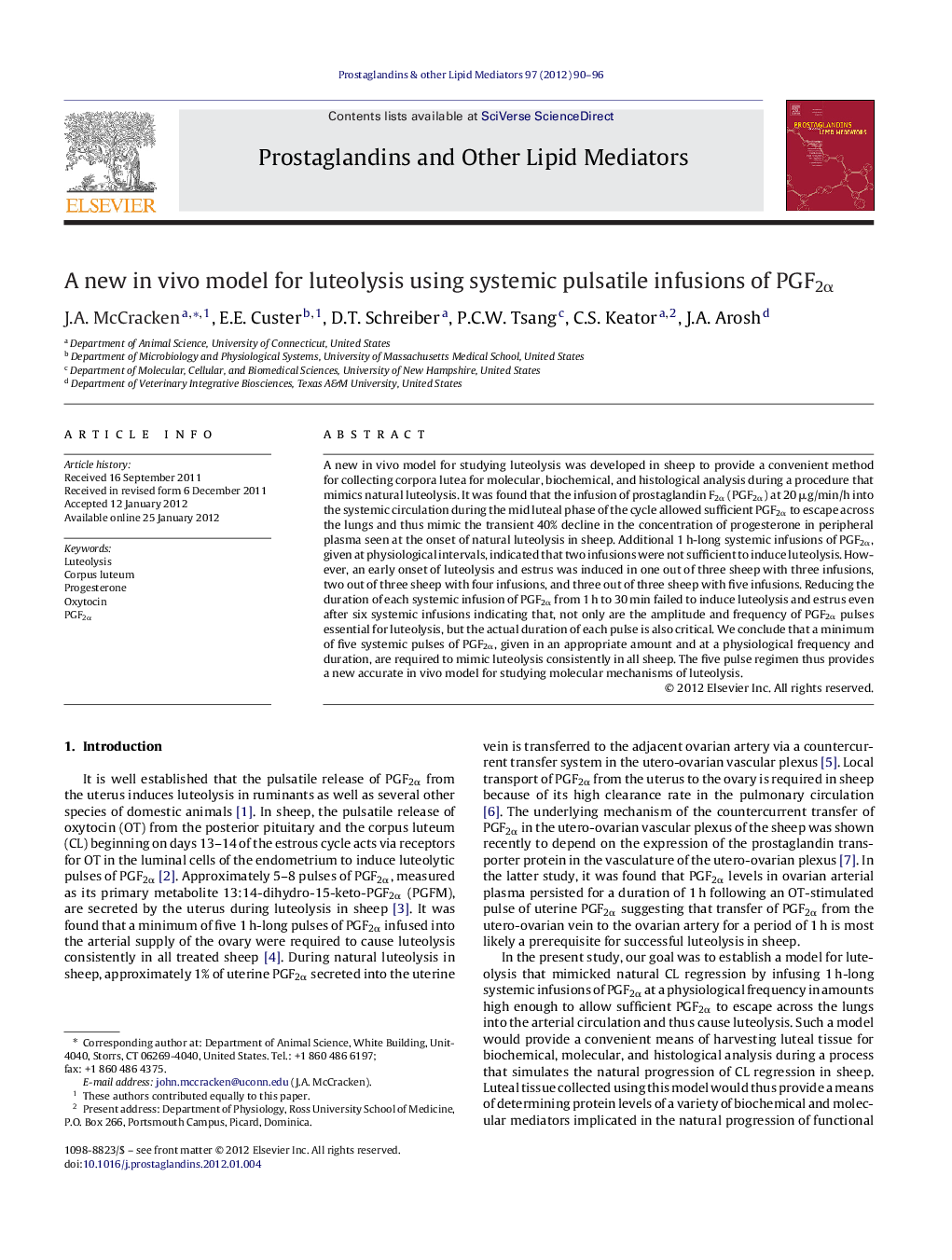| Article ID | Journal | Published Year | Pages | File Type |
|---|---|---|---|---|
| 2019655 | Prostaglandins & Other Lipid Mediators | 2012 | 7 Pages |
A new in vivo model for studying luteolysis was developed in sheep to provide a convenient method for collecting corpora lutea for molecular, biochemical, and histological analysis during a procedure that mimics natural luteolysis. It was found that the infusion of prostaglandin F2α (PGF2α) at 20 μg/min/h into the systemic circulation during the mid luteal phase of the cycle allowed sufficient PGF2α to escape across the lungs and thus mimic the transient 40% decline in the concentration of progesterone in peripheral plasma seen at the onset of natural luteolysis in sheep. Additional 1 h-long systemic infusions of PGF2α, given at physiological intervals, indicated that two infusions were not sufficient to induce luteolysis. However, an early onset of luteolysis and estrus was induced in one out of three sheep with three infusions, two out of three sheep with four infusions, and three out of three sheep with five infusions. Reducing the duration of each systemic infusion of PGF2α from 1 h to 30 min failed to induce luteolysis and estrus even after six systemic infusions indicating that, not only are the amplitude and frequency of PGF2α pulses essential for luteolysis, but the actual duration of each pulse is also critical. We conclude that a minimum of five systemic pulses of PGF2α, given in an appropriate amount and at a physiological frequency and duration, are required to mimic luteolysis consistently in all sheep. The five pulse regimen thus provides a new accurate in vivo model for studying molecular mechanisms of luteolysis.
► In vivo model for monitoring temporal changes in molecular mediators of luteolysis. ► Five hour-long pulsed infusions of PGF2α cause consistent induction of luteolysis. ► Shortening each 1 h-long pulsed infusion to 30 min failed to induce luteolysis. ► Duration of each pulse of PGF2α is critical for luteolysis. ► Interval from PGF2α start shows five pulses cause proper timing of estrus.
